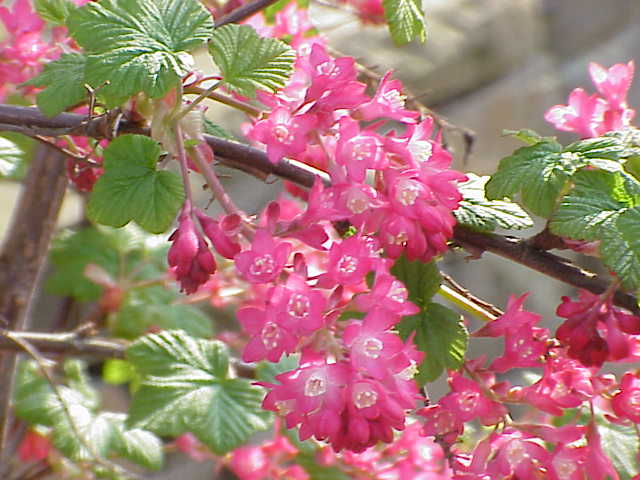 |
| How do you care for Ribes sanguineum? |
During the late 17th century when I was a pre-horticultural, yet eager, teenager working in a south London garden centre, I had clear memories of block displays of flowering Forsytha x intermedia cultivars and Ribes sanguineum. Both were early flowering and both would flower strongly on the new wood. By pruning them back to the crown the previous year you ensured nursery stock with top to bottom blooms. Both very eye-catching, both very impressive and both very popular with the customers. However we are not talking about Forsythia we are focusing on Ribes, so how do you care for Ribes sanguineum?
Native to the dry open woods and rocky slopes of western United States and Canada, Ribes sanguineum is a deciduous shrub introduced into cultivation by 19th century Scottish botanist David Douglas. In the UK it has proven to be a hardy and trouble-free with Ribes sanguineum 'King Edward VII' being the most widely cultivated and therefore the most available selected variety. When left uncultivated Ribes horticultural references indicate that mature specimens can reach a height of approximately 1.5-2 metres however the abandoned specimen in my garden currently stands at 2.5-3 metres!
Once purchased, Ribes sanguineum will perform best in full sun in all moderately fertile, well-drained soils. If you experience periods of drought during their first season then they will require periodic watering. However once established they are relatively maintenance free except for the cut back down to the crown immediately after flowering. After this heavy prune apply a generous layer of mulch, such as sterilized, well-rotted farm manure or garden compost around the base of the plant. Avoid having the compost touching the trunk.
NOTE! - Please be aware that Ribes should never be planted near pine trees as they can be a host to white pine blister rust. Ribes are also very susceptible to honey fungus. Aphids, leaf spot and powdery mildew may also be a problem. Apart from all of that they are fine.
















